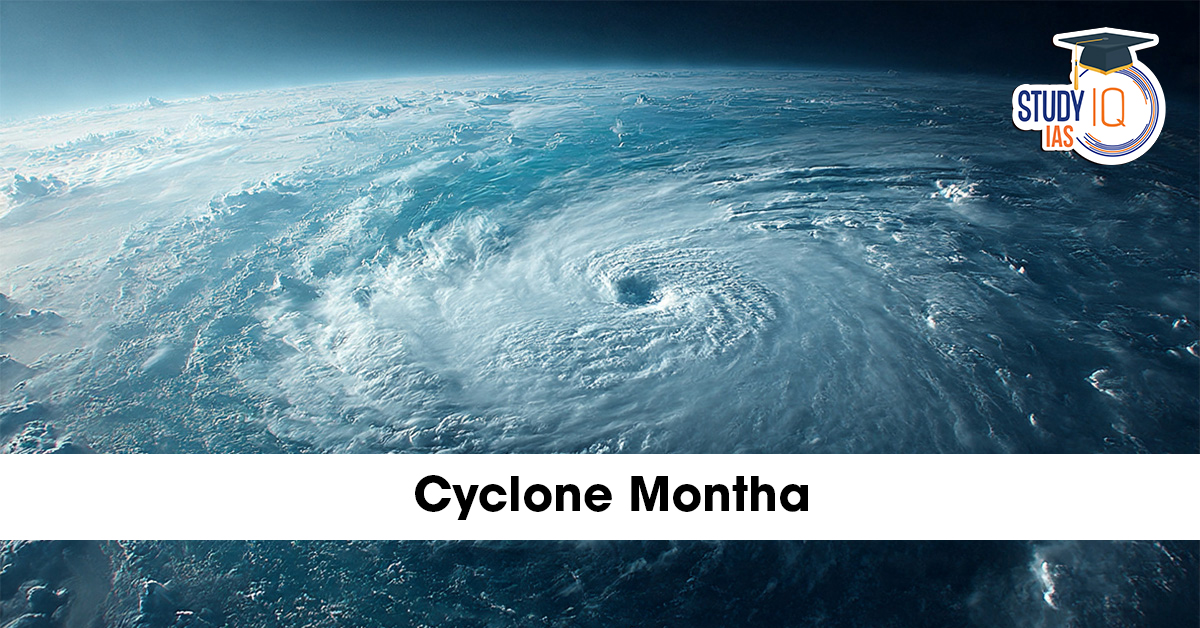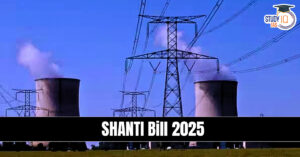Table of Contents
The eastern coast of India is on high alert as Cyclone Montha, a severe cyclonic storm over the west-central Bay of Bengal, approaches the Andhra Pradesh and Odisha coastline.
According to the India Meteorological Department (IMD), the storm has intensified into a Severe Cyclonic Storm (SCS) with sustained wind speeds of 90–100 kmph, gusting up to 110 kmph, and is expected to make landfall near Kakinada on the evening or night of October 28, 2025.
The cyclone has already triggered heavy rainfall, storm surges, power outages, and large-scale evacuations, affecting millions in coastal Andhra Pradesh, Odisha, and Tamil Nadu.
Cyclone Montha: Current Status and IMD Warning
-
Type: Severe Cyclonic Storm (SCS)
-
Region: West-central Bay of Bengal
-
Position (as of 5:30 a.m., Oct 28):
-
190 km south-southeast of Machilipatnam
-
270 km south-southeast of Kakinada
-
340 km south-southeast of Visakhapatnam
-
-
Movement: North-northwestward at 15 km/h
-
Expected Landfall: Between Machilipatnam and Kalingapatnam (near Kakinada)
-
Wind Speed: 90–100 kmph (gusting to 110 kmph)
-
Alerts: Red warning for 16 districts in Andhra Pradesh and 8 districts in Odisha
“Cyclone Montha is very likely to cross the Andhra Pradesh coast between Machilipatnam and Kalingapatnam near Kakinada as a Severe Cyclonic Storm,” — IMD bulletin
How Cyclone Montha Formed
Cyclone Montha originated over the east-central Bay of Bengal in the third week of October 2025, due to a low-pressure area that intensified under warm sea-surface temperatures (~29°C) and favorable wind shear.
The storm gathered strength as it moved northwestward, transforming into a deep depression and later a severe cyclonic storm under the influence of the Inter-Tropical Convergence Zone (ITCZ).
Such cyclonic formations are common during October–November, marking the post-monsoon cyclone season in the Bay of Bengal.
Why the Name “Montha”?
The name “Montha” was contributed by Thailand to the World Meteorological Organization’s (WMO) ESCAP Panel on Tropical Cyclones.
The naming convention follows a rotational system where countries from the North Indian Ocean region — including India, Bangladesh, Oman, Sri Lanka, and Thailand — submit names for future cyclones.
Impacted States and Regions
Andhra Pradesh: Ground Zero of Cyclone Montha
-
Districts affected: Kakinada, Konaseema, Visakhapatnam, Vizianagaram, Srikakulam, Guntur, and Anakapalli.
-
Evacuations: Over 9,700 people relocated from coastal villages; 14 lakh residents expected to face storm impact.
-
Relief Operations:
-
104 NDRF and SDRF personnel deployed.
-
126 pregnant women shifted to hospitals.
-
10,000+ residents moved to rehabilitation centres.
-
-
Chief Minister Chandrababu Naidu instructed officials to ensure zero casualties and round-the-clock rescue readiness.
Odisha: Southern Districts on Red Alert
-
Districts under threat: Malkangiri, Koraput, Rayagada, Gajapati, Ganjam, Nabarangpur, Kalahandi, and Kandhamal.
-
Evacuations: Thousands moved from low-lying and hilly areas.
-
Preparedness:
-
5,000+ personnel from NDRF, ODRAF, and Fire Services deployed.
-
Schools and Anganwadis closed till October 30.
-
Government staff leave suspended.
-
Train services partially suspended in Waltair region.
-
Tamil Nadu:
-
Chennai, Chengalpattu, and Kancheepuram reported moderate to heavy rains with gusty winds.
-
Deputy CM Udhayanidhi Stalin reviewed emergency arrangements at the Greater Chennai Corporation Command Centre.
Helpline Numbers for Cyclone Relief
| District | Helpline Number |
|---|---|
| Chittoor | 08572-242777 / 9491077325 |
| Nellore | 0861-2331261 / 7995576699 |
| Kakinada | 0884-2356801 |
| Bapatla | 0863-2234014 |
| Guntur | 0864-3220226 |
| Kadapa | 08562-246344 |
Transport and Infrastructure Updates
-
Railways: South Central Railway (SCR) has cancelled or diverted several trains. Passengers advised to check IRCTC, NTES, or helpline 139.
-
Ports: Operations suspended at Kakinada, Vizag, and Gangavaram ports.
-
Power supply: Temporarily disrupted in coastal regions due to falling trees and snapped lines.
Environmental and Agricultural Impact
Cyclone Montha has caused:
-
Flooding in low-lying areas and coastal villages.
-
Damage to standing paddy, banana, and cashew crops.
-
Erosion of beaches and mangroves along Andhra’s deltaic belt.
-
Risk of landslides in southern Odisha’s hilly terrain.
IMD has warned of high tidal waves (1–1.5 m) that could inundate coastal areas and river estuaries.
Why Do Cyclones Move Toward Land?
Tropical cyclones are driven by large-scale atmospheric wind systems that act like steering currents.
Once formed over warm ocean waters (>26°C), they move in the direction of prevailing winds — typically westward or northwestward toward land in the Northern Hemisphere.
As explained by meteorologist Vasudevan Mukunth, cyclones behave like a leaf floating along a river’s current — carried by the wind flow that surrounds them.
Post-Landfall Forecast
After making landfall, Cyclone Montha is expected to:
-
Weaken into a deep depression by October 29.
-
Cause widespread rain in Odisha, Jharkhand, Chhattisgarh, and eastern Madhya Pradesh.
-
Bring isolated showers to West Bengal and Bihar till October 30.
Disaster Preparedness and Lessons
India’s proactive cyclone management in 2025 reflects the success of its Early Warning System, NDRF deployment, and community-based evacuation models.
Key initiatives helping minimize loss:
-
Real-time IMD monitoring using Doppler radar and satellite tracking.
-
Disaster relief coordination between central and state agencies.
-
Effective public awareness campaigns in vulnerable districts.
Broader Climate Context
Meteorologists have linked the increasing intensity of post-monsoon cyclones in the Bay of Bengal to climate change and rising sea-surface temperatures.
-
The frequency of severe cyclones has doubled since 1980.
-
Warmer oceans provide more energy, making storms fiercer and longer-lasting.
-
Coastal ecosystems like mangroves and wetlands play a key role in reducing storm damage.
Conclusion
Cyclone Montha stands as another reminder of India’s vulnerability to extreme weather events. While the east coast braces for impact, coordinated evacuations, robust forecasting, and preparedness have so far minimized potential casualties.
As the storm moves inland, authorities continue to monitor rainfall, flooding, and rehabilitation measures.
India’s evolving disaster management strategy — blending science, technology, and community resilience — remains crucial to facing future challenges like Cyclone Montha.


 Future of Governance in Post-Maoist Indi...
Future of Governance in Post-Maoist Indi...
 Sabka Bima Sabki Raksha Amendment Bill 2...
Sabka Bima Sabki Raksha Amendment Bill 2...
 SHANTI Bill 2025: India Opens Nuclear Se...
SHANTI Bill 2025: India Opens Nuclear Se...

























